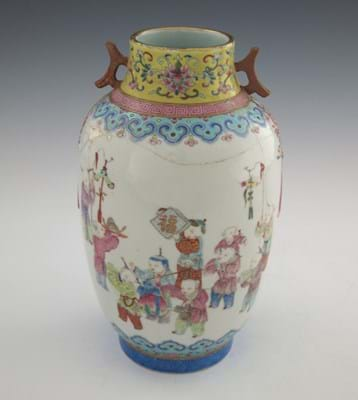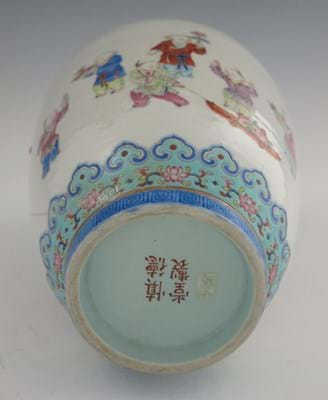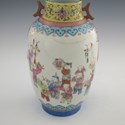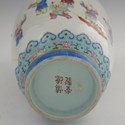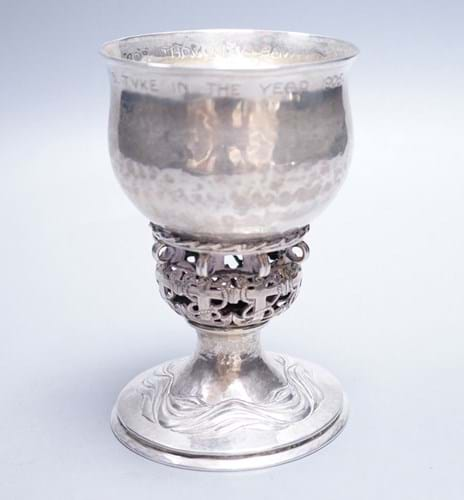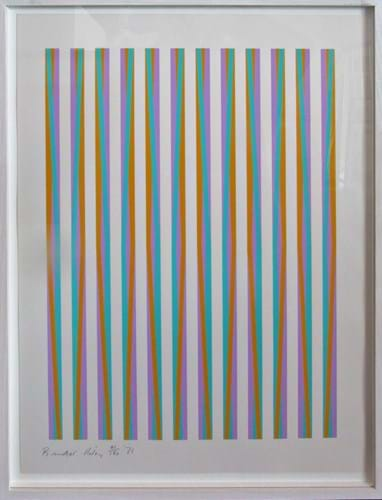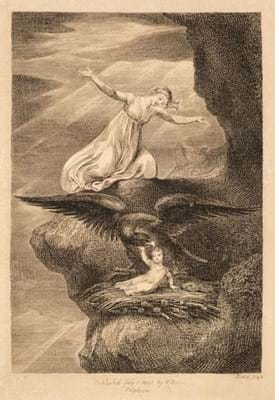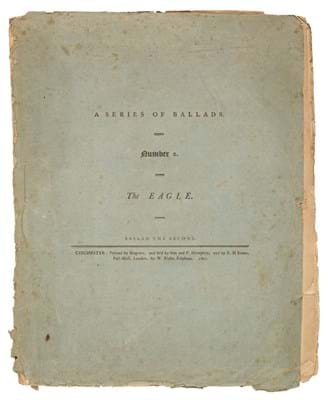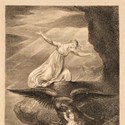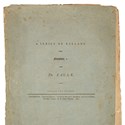
George IV mahogany extending dining table with cabinet maker’s label for Joseph Bexfield, Norwich – £7200 at Aldridges of Bath.
1. George IV mahogany dining table – £7200
The latest sale at Aldridges of Bath included this fine George IV period mahogany extending dining table. Notably it retains the cabinet maker’s label for Joseph Bexfield, Norwich.
Bexfield, who worked in a family business as a cabinetmaker, upholsterer and mahogany merchant from Pottergate Street merits a number of mentions in local trade directories and newspapers advertisements from c.1810-38.
The online directory of British & Irish Furniture Makers records an advert in the Norfolk Chronicle on February 24, 1831 in which he invites the public to inspect “a set of tables made of Norfolk Variegate Oak, which he has had the honour to design and execute for His Royal Highness the Duke of Sussex, and which will remain at his Warerooms for a few days previous to their being removed to Kensington Palace”.
In an advertisement in the Norwick Mercury on July 5, 1834 he lists his stock of “sideboards, dining tables, loo, card, Pembroke, and other tables, couches, chairs, cheffioneers, wardrobes, glasses, &c., and a general assortment of Upholdery Goods [sic].”
However, the business closed in 1838.
The table offered in Bath was a fine example of its type with eight turned and reeded tapering legs on brass castors, a patent, wind-out mechanism and three additional leaves that take it to 10ft (4m) long.
Estimated at £800-1200 at the auction on July 26, it sold to an online bidder via thesaleroom.com at £7200.
2. Gamda armoured car toy – £1200
Special Auctions Services in Newbury recently sold the collection of John Garside. An estate agent by profession, for several years he organised the Windsor Toy Fair for the Maidenhead Static Model Club. His collection was focused on some of the smaller diecast and tinplate factories that are often overlooked by toy collectors.
Some high prices were paid for a series of toys by the Gamda toy brand – a firm that operated in Israel in the 1960s (the name means 'midget' or 'dwarf' in Hebrew). The project was overtly nationalistic and the name Sabra (the word for cactus signifies an Israeli Jew born anywhere in the historical land of Palestine) was applied to the mid-1960s diecast line of mostly American cars.
A series of military vehicles included models with United Nations decals or those of the Israeli Army and Israeli Defence Force. Some were re-castings of European toys but most seem to have been original productions.
Gamda toys have a small but dedicated following. Pictured here is a rare Israel Army Toys series armoured car in original box. Estimated at £80-120 at the auction on July 26, it took £1200.
3. Chinese ‘Hundred Boys’ vase – £38,000
Famille rose vases decorated with ‘Hundred Boys’ scenes are among the most commercial of all Qing ceramics. These scenes of young Chinese males carrying auspicious objects and engaging in play bestow wishes for a large family of healthy and talented sons.
The 10in (25cm) example offered by Kinghams (23% buyer’s premium) in Moreton-In-Marsh on July 29 dates from the Daoguang period (1821-50). It was discovered on a routine Tuesday valuation day, brought in by a private client who had inherited it.
Adding to its appeal was the Shende Tang Zhi mark in iron red to the base, a ‘hall’ mark associated with a range of fine porcelains, renowned for their delicacy, made for the Hall for the Cultivation of Virtue, a favourite summer residence of the emperor Daoguang.
The vase was in openly poor condition – it had been smashed and simply repaired – so would not command the six-figure sums the best of these pieces can make. However, with five phones booked and numerous bidders online, it raced past the estimate of £800-1200 to sell at £38,000 to a UK-based Chinese collector.
4. Ramsden and Carr chalice – £1600
This textbook Edwardian Arts & Crafts planished silver chalice by Omar Ramsden and fellow Sheffield-born designer Alwyn Carr is of extra interest for its inscription. In additional to the legend to the base Ramsden et Carr Me Fecerunt it is engraved to the rim I was wrought for Henry S Tuke in the year 1905.
This connection with one of the greats of the Newlyn School and English impressionism broadened its appeal when offered for sale at Gorringe’s in Lewes on August 1. Estimated at £600-800 it took £1600. Henry Scott Tuke’s diary from March 1899 to December 1905 survives in the Tate and is available to search online. It might just be possible that somewhere among its 196 pages this chalice is mentioned.
5. Bridget Riley screenprint – £11,000
Arnold Root, the recipient of a Society for the Protection of Ancient Buildings scholarship, was steadfastly committed to the philosophy of rescuing and repairing British buildings. He worked at English Heritage for 22 years, later running a small architectural practice, working on repair and alteration projects to historic buildings.
He was also a keen collector of Modern British prints – an impressive archive that was dispersed by Wotton Auction Rooms in Bath on July 22. M
any of the day’s top prices were paid for prints by Op-Art pioneer Bridget Riley (b.1931). This 18in x 2ft (46 x 61cm) screenprint in colours on paper titled Print for Chicago 8 is signed, numbered and dated 1971 and has the edition number 81/150. It topped the sale at £11,000.
6. Copy of The Eagle – £19,000
The Eagle, the second in a series of animal ballads written by William Hayley, is best known for the frontispiece and two illustrations provided by William Blake (1757-1827).
The project was published in parts by Blake in 1802, the letterpress printed by Seagrave, a printer in Chichester, with the engravings printed by Blake and his wife Catherine on their own roller press at the cottage in Felpham, Sussex where they had moved in 1800.
Hayley wrote the ballads in an attempt to help Blake make money through the sale of the illustrated work, but the scheme seems to have been a financial failure for which Blake bore most of the costs.
This rare first edition comprises 16 pages of text on pale cream thick wove paper, Blake’s plates (untrimmed with tissue-guards intact) and the original pale blue paper wrappers. It came for sale at Dominic Winter in South Cerney, Gloucestershire on July 21 with a guide of £1500-2000 but did rather better, selling at £19,000.



